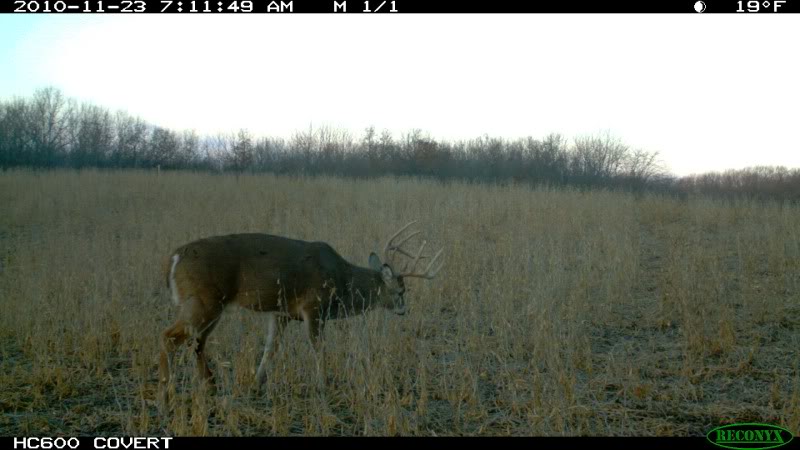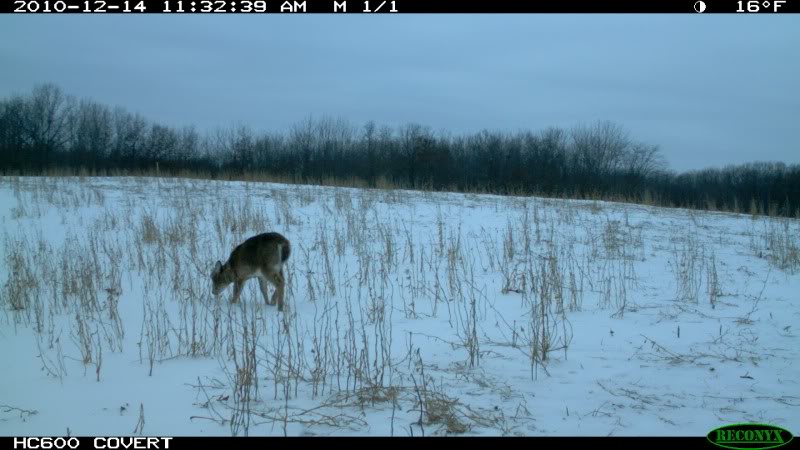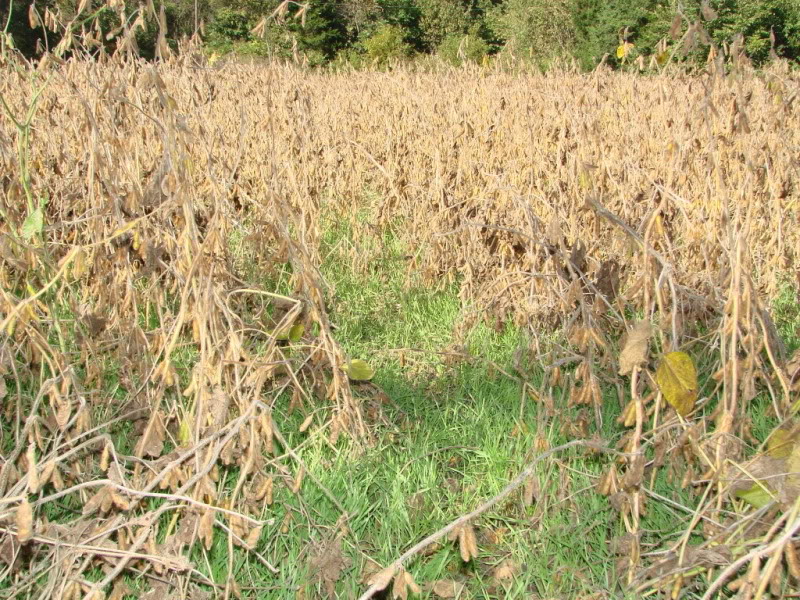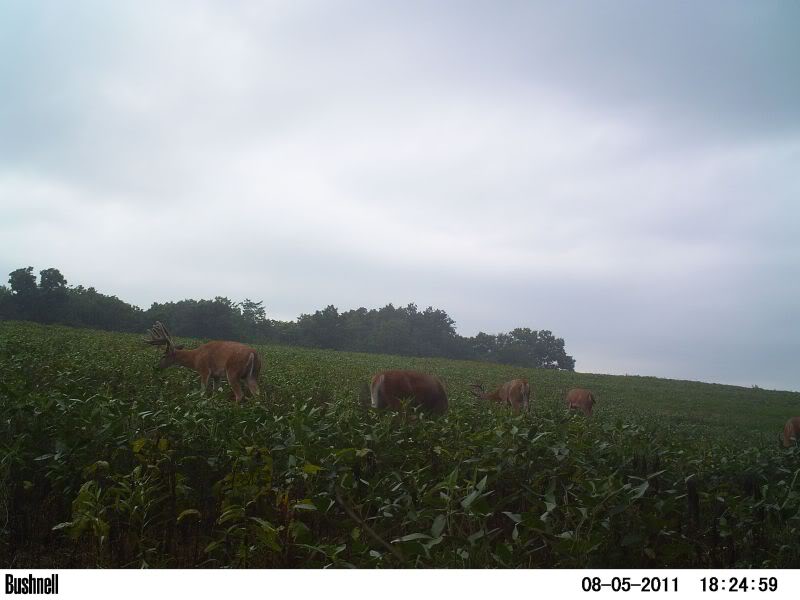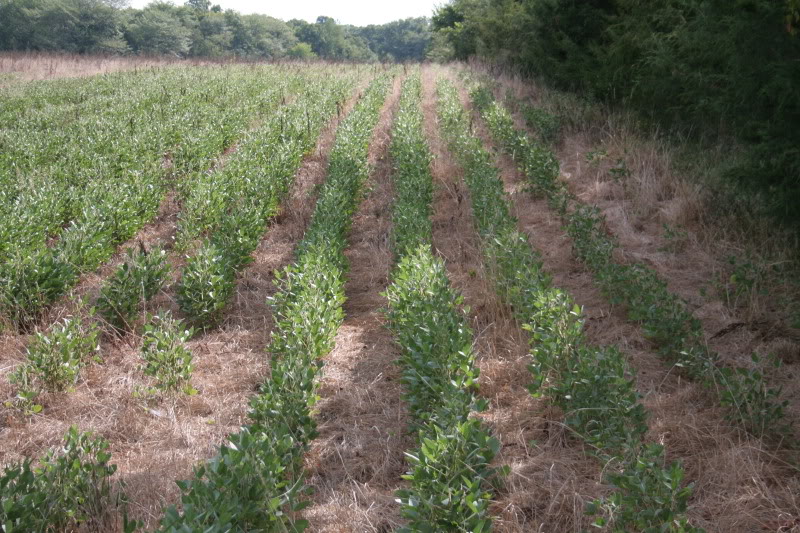Pretty damn good reasoning there Paul. I unfortunately got on the band wagon this year with forage beas, but am going to try your approach next year, At least my beans are right next to clover and standing corn.
Well done on planting a combination of crops in one place...:way:
You can’t grow big deer…
The implication by those companies that market seed almost exclusively to whitetail hunter/landowners is that their seeds/crops have the ability to produce bigger/larger antlers but nothing could be further from the truth. Assuming whitetails are not in a starvation situation due to over population and over browsing…no plants or combination of plants/crops on this planet can cause antlers to grow larger then their genetic potential. Mortality is usually what keeps deer from reaching their genetic potential…not what they eat.
Age and genetics…the only two factors that determine the size of a whitetail bucks antlers (disease and accident stress aside) If this were not so, then those raising captive deer would only have to feed them the very best to grow giants…but since this is not possible they spend incredible amounts of money to buy stud bucks that have the right genetics or buy semen and artificially inseminate does.
People living in agricultural areas often forget that giant whitetails are killed every year in wilderness areas like Saskatchewan and Mexico where not a single deer has ever tasted a soybean or clover leaf. My younger brother lives in northern Idaho and has killed some huge whitetail bucks including a booner that lived their entire lives never ever tasting any type of agricultural crops. His daughter’s boyfriend’s dad killed an amazing 220+ inch monster that lived his whole life eating…browse.
My brother hunts lions all winter…whitetail bucks perish from a different kind of mortality out there, note the deep snow and the type of browse.
Idaho’s Greatest Whitetails
Hmmm? Wonder how those huge whitetails ever got along with someone “providing” them with some high priced “magic” food source??
Instead…they seem to do just fine on this…
Have we forgotten that browse is a whitetails natural food source? Not soybeans, not clover or corn or Buck on a bag brassicas…browse. You may also not be aware that natural browse not only meets and exceeds the daily protein requirements of whitetails but many species EXCEED even the most high quality clover and soybean levels!!
It goes without saying then that it is imperative that we provide that natural forage by improving our woodland habitat by Timber Stand Improvement, hinging, edge feathering and tree/shrub planting. It also makes the idea that we must
provide deer with some other source of protein or they will never achieve their potential…quite ludicrous.
The most difficult time of year for whitetails is the most often overlooked by both landowners and those that market seed to them….winter…the one time of year they need food the most…we provide the least.
Rut weary bucks are the most likely to leave for greener pastures when there is nothing left to eat and therein lies the problem with crops like forage beans. They provide feed for only a few months of the year and during a time when there is already plenty of other forage available. When deer need feed the most however…the forage bean plot is bare as a board forcing them to leave. A mix provides food for only a short time longer because yields are a fraction of what they could be.
A plot containing white clover and grain soybeans however can provide deer with high quality forage literally year around and grain when deer are at their most desperate state. Over seeding with winter rye and radishes not only eliminates the “useless” time when beans are yellowing but carries deer through the entire winter and into spring.
This buck has been living on my place for 5 years now…no monster by Iowa standards but he gets along just fine on white clover, rye and soybeans…no “magic” high priced seed has he ever seen…
Combined with natural browse whitetails will receive a diet of high quality forage that will far and away exceed their most maximum possible requirements…all at a reasonable cost to the landowner.
We’re a desperate lot it seems, always looking for an easy fix or a magic pill, turn on the radio and there are ads for pills that say we’ll never have to exercise again, just take a pill and the pounds will just shed right off! Others claim to solve memory loss or prostate problems…and they are doing a brisk business by those who believe their outlandish claims.
Nearly every deer biologist, outdoor writer or TV celebrity is being paid to hype someone’s seed…it’s a huge and profitable business in which profits quickly cloud over the truth.
There’s a pill for those folks too…clean their colon out so they won’t be so full of…”stuff” :thrwrck:
When I picked up a bag of Real World soybeans from Don Higgins at the Iowa Deer Classic I told him the same thing I tell everyone who ask me to test seed for them…I’m going to be brutally honest when I tell folks about your product. Don didn’t expect anything less…
These are his RW soybeans as of August 17th, 2011…they have not received any rain since June 28th
They look awesome…but so do my ag beans planted in the same field…they have loads of pods that are developing and filling well despite the severe drought
The only problem that I can see is that they (RW) would mature a little to late for my area but just right for those in mid to southern Missouri and Illinois I suspect.
These beans are fenced because my goal is grain production for maximum fall and winter attraction, summer forage is easily provided with white clover and natural browse on all the farms I work with…the combination easily provides protein in the 25+ % range.
Obviously there is plenty of high quality forage on Don’s beans if one could avoid the use of fencing.
The ag beans look equally great with plenty of pods
The ag beans are year old seed given away by major seed companies each year, germination may be slightly lower but with free seed I just increase the planting rate a tad. Yields however are completely unaffected by year old seed and will equal those of fresh seed.
Shipping soybean seed (or any large seeds) is outrageously expensive so I would encourage you to purchase seeds from your local ag co-op if at all possible. Ask for early maturing, high yielding soybeans that resist shattering and always check for year old or left over seed after spring planting season is done for bargain prices.
Friends…across the continent, whitetails can easily reach their genetic potential on nothing more then their natural native browse…if of course they are allowed to live. Use trail cam surveys to monitor your deer herd and keep track of the age of the bucks using your property, if you want them to reach maturity, you’ll have to let them walk until they do so.
Examine you habitat goals and determine how you can maximize your habitat by increasing native browse and planting a combination of crops within a centralized feeding area. Our goal should be to adapt deer to coming to that plot year around with emphasis on the period from December to April when deer are stressed and searching for food sources. Grain soybeans over seeded with rye and help you meet that goal along with clover, brassicas and rye.
Corn and milo are other great sources of late fall and winter feed and Mike sent a picture of his corn which looks pretty doggone good considering he is in a drought stressed area in WI
Don’t fall for the “magic pill” hype in fancy ads or from deer biologist’s intent on profiting from your seed purchase. Creating habitat takes time and hard work but it need not cost a small fortune, your goals and means of meeting those goals may be different from mine, so if you use corn, soybeans or milo as part of your year around habitat program…please come back and share what worked for you on your land in an effort to help others reach their habitat goals….









